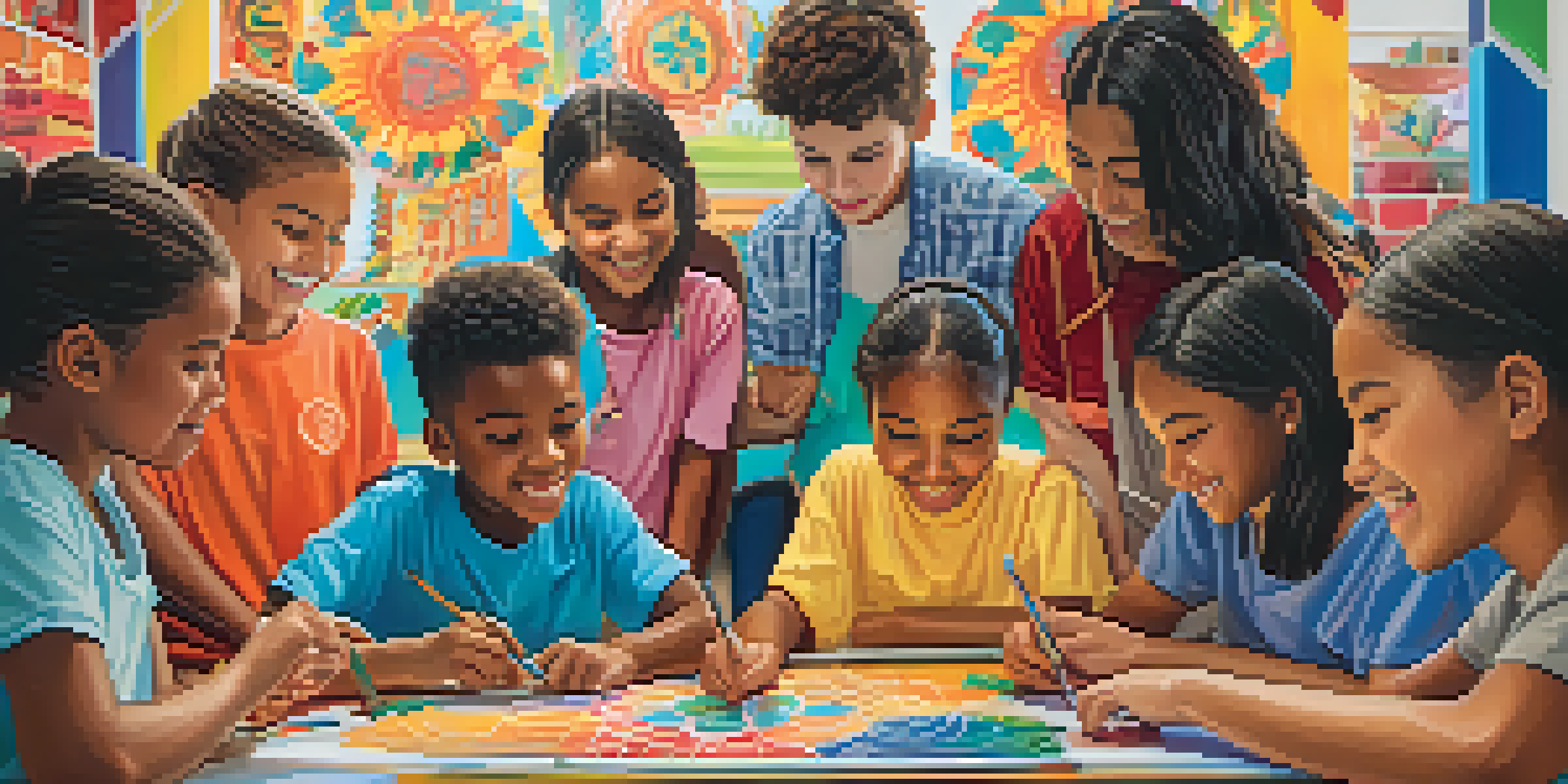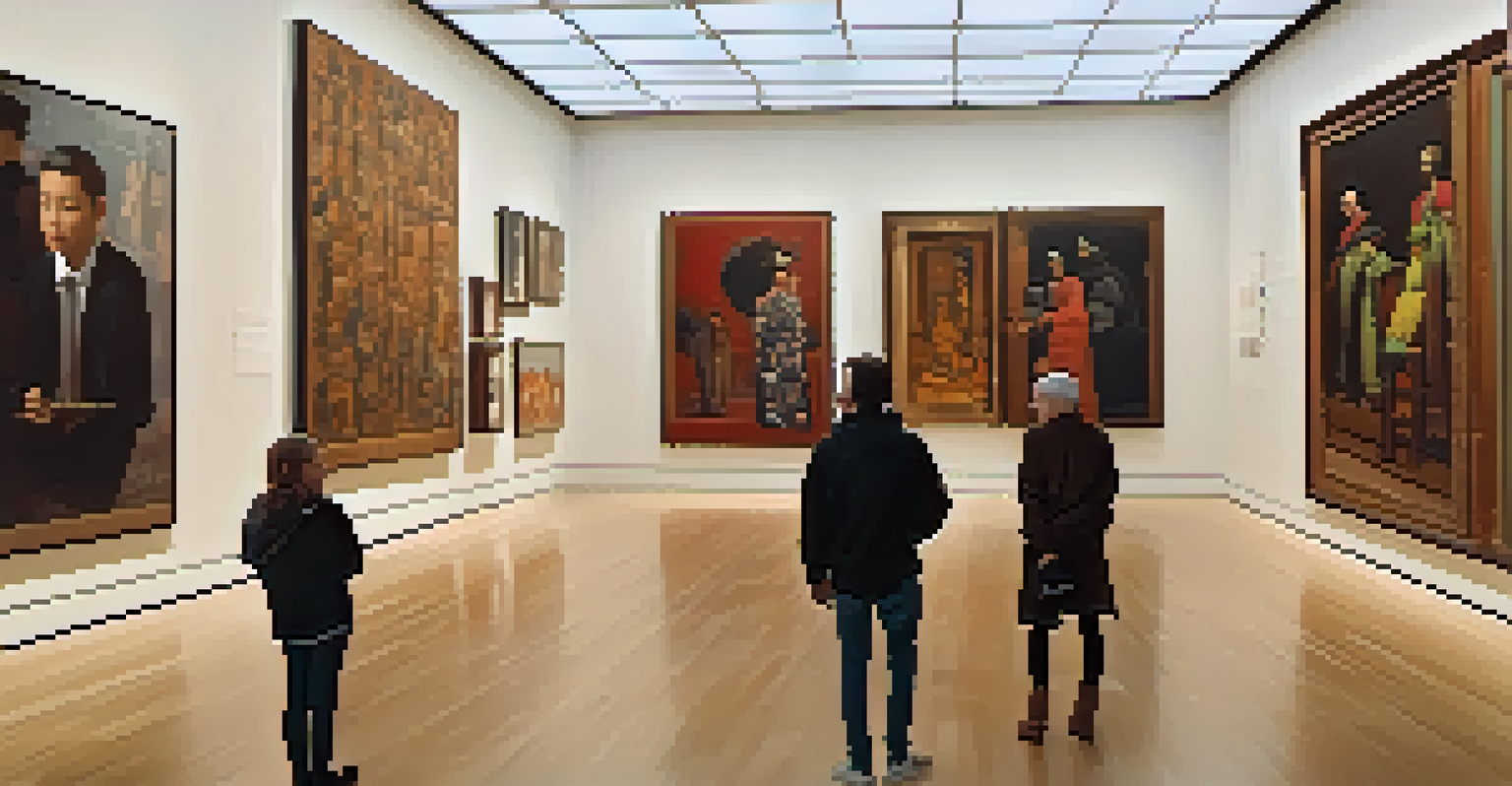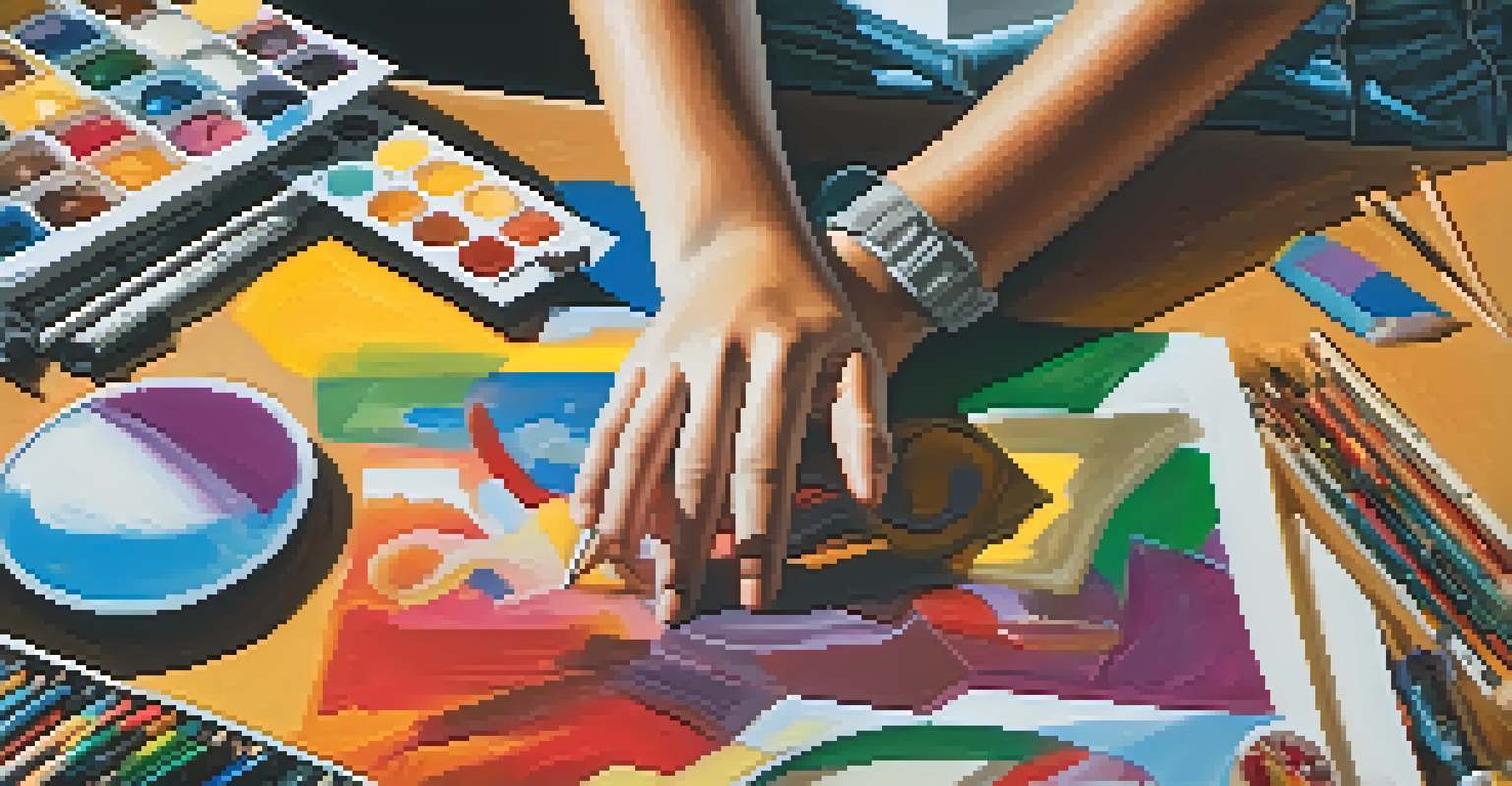Art Education: Bridging the Gap Between Cultures

The Role of Art Education in Cultural Awareness
Art education serves as a powerful tool for promoting cultural awareness. By engaging with various art forms, students learn about different cultures and their histories. This exposure helps to break down stereotypes and fosters empathy towards others, creating a more inclusive environment.
Art is the most beautiful of all lies.
When students study artworks from diverse backgrounds, they gain insights into the values and beliefs of those cultures. For instance, examining indigenous art can reveal the significance of nature in those communities. Such understanding encourages respect and appreciation for cultural differences.
Moreover, art education encourages students to express their own cultural identities. Through creative projects, they can share personal stories and traditions, enriching the learning experience for everyone involved. This exchange of ideas helps to build a bridge between cultures, promoting unity and mutual respect.
Enhancing Communication Skills Through Art
Art is a universal language that transcends verbal communication barriers. In art education, students learn to express their thoughts and feelings visually, which can be particularly beneficial for those who struggle with traditional forms of communication. This skill is vital in connecting with peers from different cultural backgrounds.

For example, a student who may find it challenging to articulate their experiences can convey them through their artwork. This not only empowers the individual but also invites dialogue among classmates. Through discussions about each other's artwork, students can explore deeper cultural narratives, fostering understanding and connection.
Art Education Boosts Cultural Awareness
Engaging with diverse art forms helps students understand and appreciate different cultures, fostering empathy and inclusivity.
Ultimately, art education enhances both verbal and non-verbal communication skills. By encouraging students to discuss their creative processes, they learn to articulate their ideas more clearly. This practice not only aids in their personal growth but also strengthens relationships within a multicultural classroom setting.
Art as a Medium for Cultural Exchange
Art acts as a conduit for cultural exchange, allowing individuals from different backgrounds to share their stories. Through collaborative projects, students can work together, blending distinct artistic styles and techniques. This collaboration not only enriches their artistic skills but also fosters a sense of community.
Art enables us to find ourselves and lose ourselves at the same time.
For instance, a joint mural project that includes elements from various cultures can create a visually stunning representation of unity. When students contribute their unique perspectives, they collectively create something meaningful that reflects their shared experiences. This process encourages appreciation for the richness of diversity.
Moreover, art exhibits that showcase diverse cultural expressions can invite broader community engagement. Such events provide platforms for students to celebrate their heritage while educating others. This not only builds pride in one's culture but also promotes cultural understanding beyond the classroom walls.
Building Empathy Through Art Projects
Empathy is crucial in bridging cultural gaps, and art projects can be an effective way to cultivate it. When students engage in art-making activities that reflect the experiences of others, they develop a deeper understanding of different perspectives. This can be particularly impactful in addressing social issues.
For example, a project focusing on social justice themes might involve students creating artwork that highlights marginalized voices. By exploring these topics through art, students learn to empathize with the struggles and triumphs of others. This emotional connection can lead to more profound discussions about cultural differences and similarities.
Art Enhances Communication Skills
Through visual expression, art education allows students to convey their thoughts and feelings, bridging communication gaps in multicultural settings.
As students share their artwork and the stories behind them, they create spaces for vulnerability and openness. Such environments encourage collaboration and understanding, helping to dismantle biases. Through this process, art education becomes a catalyst for social change, promoting empathy across cultures.
The Global Impact of Art Education
Art education has a global impact, influencing cultural exchange on an international scale. Programs that connect students from different countries create opportunities for collaboration and learning. These initiatives often lead to lasting friendships and cross-cultural understandings that transcend geographical boundaries.
For instance, virtual art exchanges allow students to share their work and ideas with peers from around the world. This not only broadens their artistic horizons but also fosters a sense of global citizenship. Students learn that while they may come from different cultures, their creativity and emotions are universally relatable.
Additionally, exposure to global art movements can inspire students to incorporate diverse influences into their work. This synthesis of styles encourages innovation and creativity, showcasing the beauty of cultural interchange. Ultimately, art education can play a vital role in shaping a more interconnected and culturally aware world.
Challenges in Art Education and Cultural Exchange
Despite its benefits, art education can face challenges in promoting cultural exchange. Limited resources, lack of trained educators, and insufficient support can hinder the implementation of diverse art programs. These obstacles may prevent students from experiencing the full spectrum of cultural narratives.
Moreover, some educational systems may prioritize standardized testing over creative expression. This focus can stifle students' artistic growth and limit their exposure to multicultural perspectives. As a result, students may miss out on valuable opportunities to develop empathy and understanding through art.
Art Promotes Global Cultural Exchange
Collaborative art projects and virtual exchanges enable students to connect across borders, enriching their artistic experiences and cultural understanding.
Addressing these challenges requires a collective effort from educators, policymakers, and communities. By advocating for inclusive art education programs and providing necessary resources, we can ensure that all students have access to the rich tapestry of cultural experiences that art can offer.
Future Directions for Art Education and Culture
Looking ahead, the future of art education holds exciting possibilities for cultural exchange. With advancements in technology, virtual platforms can facilitate connections between students from diverse backgrounds. These tools can enhance collaborative art projects and broaden access to global artistic influences.
Additionally, integrating cultural studies into art education can create a more holistic approach. By emphasizing the historical and social contexts of art, students can gain a deeper appreciation for cultural diversity. This can lead to more meaningful artistic expressions that resonate with their own identities and experiences.

Ultimately, the continued evolution of art education can play a pivotal role in bridging cultural gaps. By nurturing creativity and cross-cultural understanding, we can cultivate a generation of empathetic individuals who value diversity and collaboration in an increasingly interconnected world.